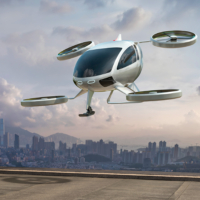In this article:
- Understanding an Industrial Media Converter
- What is a Media Converter?
- Media Converter Types
- Media Converters with PoE
Understanding an Industrial Media Converter
Fiber optic cables are now the fastest-growing medium for industrial networks, excelling in high bandwidth, long-distance transmission, and resistance to interference. With this growth, reliable media converters have become crucial. These devices convert Ethernet signals into fiber optic signals, ensuring seamless transmission.
Media converters have been key to network connectivity since the early days of networking, even before fiber optics were common. In this article, we’ll cover their role, how they work, and the types available, helping you confidently manage your network with ease.
What is a Media Converter?
An industrial media converter operates at Layer 2 of the OSI model, bridging communication protocols like Ethernet between different media types. These devices are commonly used to connect UTP (unshielded twisted pair) cables to fiber, ensuring compatibility and smooth network integration. Many industrial-grade media converters also support gigabit Ethernet, offering high-speed data transmission for demanding applications.
Media converters come in various configurations, supporting protocols and data rates from 10 Mbps to 10G. A notable example is the FCU-6001-SFP+, designed for compatibility across 10G/5G/2.5G/1G Copper and 10GBASE-X SFP+ connections.
This flexibility lets you choose the right converter for your needs—whether it’s unmanaged or managed, a chassis-based solution for enterprises, a slide-in unit for high-density setups, or a standalone device for compact environments.
Media converters are especially useful for extending network connectivity across long distances. Using fiber optic cabling, they connect devices with copper ports that exceed the 100-meter limitation of copper Ethernet cables. In a surveillance setup, for instance, a pair of converters can link a remote IP camera to a control station. The camera connects to a copper-to-fiber converter, translating the Ethernet signal into optical pulses. These pulses travel over a fiber optic cable to another converter near the control station, where the signal converts back to Ethernet for monitoring on a PC or display.
Beyond extending LAN distances, media converters bring many other benefits, making them essential tools for modern networking.
- Media converters save time and money by allowing administrators to upgrade a local network to fiber without expensive infrastructure changes. This ensures your network stays cost-efficient and easy to manage.
- Media converters connect multiple LANs to create a larger campus network. They help expand your network and improve operations, giving you control over its growth and efficiency.
- Equipped with 1550 nm optics, media converters can extend LAN connectivity over single-mode fiber, reaching distances of up to 160 kilometers.
- Media converters help lower network operating costs by enabling remote troubleshooting and configuration of network equipment in distant locations.
- Media converters safeguard data by shielding it from electromagnetic interference (EMI), which can lead to corruption when transmitted over copper connections.
- Media converters enable seamless transitions between link speeds, such as 10 Mbps to 100 Mbps or 100 Mbps to 1000 Mbps, ensuring efficient and adaptable network performance.
- Some media converters improve network reliability by detecting and responding to link failures.
- Media converters with power over Ethernet (PoE) remove the need for a local AC power source. They are used with security cameras, IP phones, and WAPs. The link fault pass feature ensures smooth operation during network interruptions.
Media Converter Types
Media converters come in various forms and designs. At Assured Systems, we provide managed and unmanaged options to extend copper to fiber, multi-mode to multi-mode, and multi-mode to single-mode. Fiber solutions enable long-distance networks with better data security and resistance to electromagnetic interference. Features like plug-and-play make these media converters simple and effective to use.
1. Copper-to-fiber media converters connect devices using Ethernet cables to those using fiber optic cables. They are often used to link devices over long distances or extend a network. PoE media converters deliver power and data to remote devices like IP phones, security cameras, and access points, perfect for areas without easy power access.
2. Serial-to-fiber media converters connect devices using serial communication (like RS-232 or RS-485) to fiber optic cables. They are often used in industrial control systems and other serial applications. Many converters include an SFP slot for flexible network expansion and compatibility with different fiber types.
Single-mode and multi-mode fibers are used in copper-to-fiber and serial-to-fiber media converters, each suited for different distances. Here’s how they’re used:
- Single-mode media converters connect devices with single-mode fiber optic cables for long-distance communication. Commonly used in telecommunications, they are perfect for linking remote locations to core networks.
- Multi-mode media converters connect devices using multi-mode fiber optic cables for short-distance communication. They are commonly used in industrial control systems and other nearby applications.
Media Converters with PoE
PoE media converters act as Power Sourcing Equipment (PSE), similar to PoE injectors, converting fiber to copper cable. For remote setups, data is often sent over fiber while power is supplied locally, from sources like light posts or solar panels. Solar systems typically use a 24VDC battery bank, ideal for Antaira’s low-voltage input series that operates from 12VDC to 55VDC. PoE media converters power devices such as security cameras, Wireless Access Points, and VoIP phones through a single cable, automatically providing only the required power.
Antaira’s industrial-grade PoE media converters, including the IMP-C1000-SFP-T, IMP-C1000-SFP-BT-T, and IMP-C1000-SFP-BT-24-T, highlight our commitment to innovative industrial networking. The bt models support IEEE 802.3bt high power PoE, delivering up to 90W to devices like LED lighting, HD monitors, occupancy sensors, and PTZ IP cameras.
Antaira Technologies stands out in the media converter market by providing advanced, reliable solutions that enhance connectivity across diverse industrial applications










